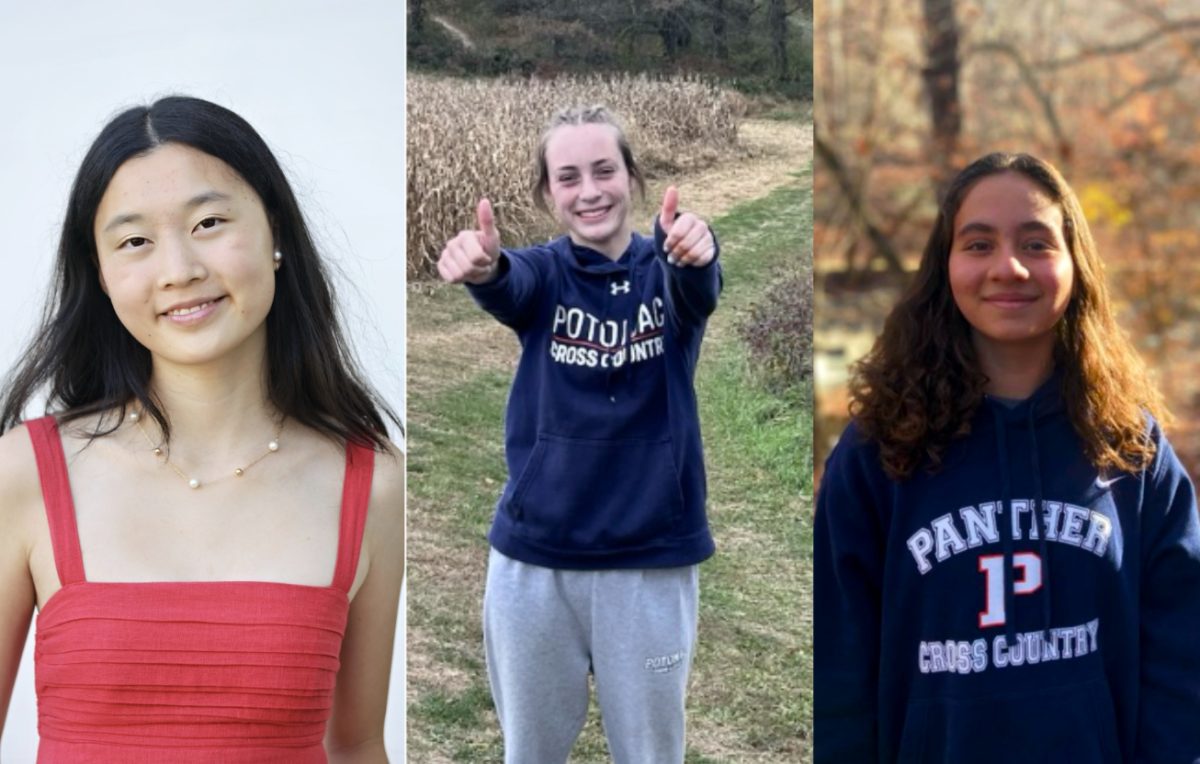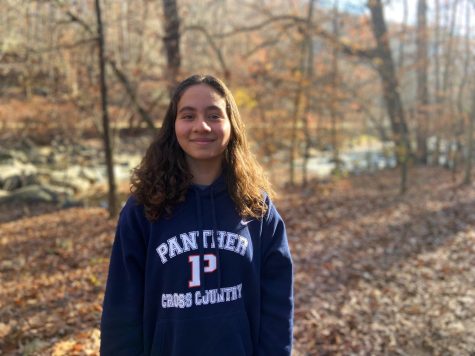Dr. Singleton: All right. So what’s on your mind? How can I support you all today?
Jessica: We were mostly just curious as to whether or not you think the CCERJ is fulfilling its full potential because we see it as a space that could do a lot, but at the same time, we feel like it’s really just a room right now, and not much is going on.
Dr. Singleton: Gotcha. I would say your point is valid and I think is a little bit nuanced. In saying yes, there could be more. But I would also say that it is serving its purpose and let me explain a little bit more. I know for a fact there are a lot of affinity groups that meet in there, whether it is affinity of the champions that live in that space, like Ms. Wills and Ms. Bailey or affinity groups that have never had a space and they use that space for general meetings, for collaborative events, and then also some celebratory events. Now, I think one way that we could be more intentional in using that space is maybe hosting more affinity groups in that space. And what I mean by that is not just showing up and being in there, but having programming. So not so much waiting for a lunchtime conversation or waiting for [insert current event that happens that impacts us all], right. I’m being intentional by saying you know what, this week on May 4 or and from each and every week planned out or every other week, depending on the schedule in the space, and the capacity of our champions, schedule out ways that we can one, immerse in the community, but serve all the various diverse populations and communities we have in this space because ultimately, we know what this stands for, which is community, racial justice, and equity, and these are all things that directly serve as a direct byproducts or outcomes of doing work in DEI. What are your thoughts? Can I ask a follow up? What are your thoughts? What are some ways you would say if there was a way that we could improve that space? What would it be?
Jessica: I agree that programming is important.
Dr. Singleton: Yeah.
Jessica: I was talking with Lauren Hilliard and she was talking about how it’s a good meeting space for affinity groups but with the BSU for example it’s just too small. So it’s important to actually have things going on in there, more than it just being a meeting space.
Alejandra: I mean, we also talked to Mr. Wicker, and what he said was about how this space is there, and its intent is out there for us to do what we want with it. But it’s more about what we as a community do and the inclusion within our community. So I also agree with programming.
Dr. Singleton: So ultimately, I’m hearing… and you want to add to that?
Hafsa: I also think it depends on what our focus is. If we’re trying to spread information to the general public, or if we’re trying to appeal to a specific community, if our hope is to educate everyone. Then only a handful of people who are interested will attend these organized events and the people who really need the education most are the ones who are going to be missing out. I guess it really all depends on what we want to do with our space.
Dr. Singleton: So, part of it, and I think it goes back to the question again, part of it is figuring out what is our why. What do we want, and create actionable steps for each stakeholder that’s involved. So that is our students. That is our DEI coordinators, myself, Ms. Wills, Ms. Bailey, Ms. Beck. It is for our division head and our senior admin and not only for each of those people and stakeholders to do something, but to relay that message too, to the larger community. Part of the reason in any type of movement, right? When we don’t have information, we start to create our own perception of what’s really going on. i.e, nothing’s really going on in the CCERJ. Everyone just goes there to hang out and sit, right. That’s a perception. Some of it could be true, but it also could be just manufactured based on people walking by, right. A lot of people walk by the space every day. So it’s up to us to figure out what are the actions each stakeholder can do, but then relay that message, whether it’s a Upper School meeting, this day in the Upper School, whatever the case may be, to share that so there’s a level of transparency, but also I would imagine would empower everyone in this space because we are active contributors to not only the CCERJ, but for the wellness of the Potomac Upper School community.
Hafsa: Yeah, I was also thinking that the best way to address the student body is to start with the needs of the student body. So in your opinion, do you believe that the CCERJ does a good job with allowing students to take the initiative, and get involved, and integrate student feedback and adjust accordingly?
Dr. Singleton: Absolutely, absolutely, and I’ve seen that firsthand. Whether it’s me working with students individually or just, if you just sit in that space, you will see the empowerment that Ms. Wills and Ms. Bailey gives to each and every student that walks through that door, whether they’re coming for their expertise, which is Science and English or for all the reasons they should be in that space, because it’s the CCERJ center, right? I know that students are empowered to not only use the space, but to thrive in that space. That is your space, right? That was a school store at a time, right? That changed because of the work of students. That changed because advocates, students that were seniors when you all were little, really felt passionate about it. So they paved the way so you all can thrive in it, right. But to your point, it’s now up to our students to really take advantage of that space not only because they need to know what the space is, but to actually use it and not just for space. I need a nap because there’s a comfy couch or I just want to hang out because I don’t want to be in the caf. I want to be in the space, use this space, and bring others that don’t know about the space. Or I have knowledge around whatever the topic of the week is to come to that space because I know if I go there, I’m going to learn something new right? We go to the library when we need to check a book out. We need to go to the CCERJ when we need to check information out about whatever is going on, just like we would do for a library, nurse’s office, or a phenomenal counselor’s office.
Jessica: We’re also sort of talking about the CCERJ as being a protected space that might be different from the Crossroads or the cafeteria for students who don’t feel comfortable in those spaces. But then we were wondering, how to balance that part of it with it being a space for everyone. I don’t know if that makes sense.
Dr. Singleton: No, I think I understand your question and I’ll say this: The similarities between the Crossroads and the CCERJ is that it is for everyone. Everyone should know that I could go in there no matter if I’m white, black, green, purple, or gray. I can walk in that space because that’s my space. This school is all of your school. Sense of belonging is a part of your engagement here at Potomac. The reality is, though, we have students from different backgrounds, different cultural, ethnic groups, different races, so on and so forth. That yes, innate sense of belonging may not be here for them because a space like this [Potomac] wasn’t fully created for those types of populations, right? Doesn’t mean we don’t belong here. Doesn’t mean that we don’t thrive in these spaces. But it does mean that it’s harder, or we cannot, you know, use the same mindset that most of the majority students say this is my school I can go to any space. Some students of color, students that are marginalized, don’t have that same experience because more times than not they feel that this isn’t their space, and it’s I just show up to the school every day because my parents want me to be here. I want to get a good education because I read all the reviews online, right, where all those things can be true, but that doesn’t mean that their experience is a good experience of being seen, right? Saying hi to someone, feeling like I have representation in the classroom, outside the classroom and in the images I see every day. Yes, the upper school meetings. That should be the space where people should feel like they belong. But just like with those, some people don’t raise their hand, right? They don’t want to go up there and put themselves out there. They may not want to be one of those leaders. That’s the same when you think about going into spaces that are perceived to be protected. The protection that comes to CCERJ is we’re protecting from ignorance, we’re protecting from a lack of inclusion or lack of diversity, a lack of justice, and that’s the protection right, but it’s not a protection from Alejandra because she has brown hair. She can’t come in or Hafsa who has a hijab, she can’t come in. It don’t matter what you are, how you look or where you come from, those spaces, common area or CCERJ, is just space. Now it’s up to making sure that we encourage people and support the comfortability of everyone in this space to know that they can go to that space. Does that make sense?
Jessica: Yeah, that makes a lot of sense.
Alejandra: How would you interpret the role of the CCERJ? How is that manifested in daily life today?
Dr. Singleton: I would interpret it as running smooth as planned. Or going not maybe not as smooth as planned in that the CCERJ in the champions that support the CCERJ and work before the CCERJ, specifically DEI coordinators across the board, we are striving for the goals to attain by not only to achieve these goals, but to embody these goals in every walk of life. I need to be able to carry myself as a DEI coordinator, and a protector and a champion of the CCERJ when I counsel. When Ms. Wills teaches science, when Ms. Bailey teaches English, we need to be able to bring those experiences and transfer them to the CCERJ. So I say all that to say our goals are intertwined, right? There’s a level of intersectionality between our passions and our careers that feeds directly into the CCERJ. The people that you see that champion those spaces are passionate about what they do. The people you mentioned that you interviewed are passionate about the work that they do. And that’s part of the joy and the energy that comes with trying to advocate, right, and that’s essentially advocacy, right? Champions, that’s what CCERJ is about, right? Illuminating these things and supporting these communities so they don’t feel excluded and they feel like they belong. So I do agree that our goals, yes, we’re striving for our goals. We have to achieve them every year. We’re still working towards that. But we’re doing that and embodying it outside of just in that space. Because that’s what our goal is.
Hafsa: We’ve been talking about fostering a sense of trust within the community and how just because you have room doesn’t mean that there’s trust there. What is your take on that?
Dr. Singleton: I would agree. I mean, trust is earned, like respect is earned. And, although we can create this phenomenal structure, what do they always tell us? 90 acres of land, right? 90 acres of school, we have these phenomenal buildings. We listen to music on our bells, like we can create the perfect environment. However, it’s up to the people that live and are immersed in that environment to cultivate that trust. And part of the reason why there could be distrust is there’s a natural generational gap between your adults here and the students here. Students tend to reflect on I don’t know if you guys are familiar with the Sway in the Morning Show, and Kanye West went on Swat one day and said “You ain’t got the answers Sway.”. I feel like students more time embody that right? Even though, yes, you have adults that live life and experience things you’re learning clearly because that’s why you like having the specific teachers you have, right. However, you guys are teenagers, and teenagers tend to believe Oh, I’ve got the answers. I know it. I know it. So, I say all that to say it’s going to take us to bridge that gap, that mistrust that we have, and part of it is not innately students’ fault. We got to look at the culture that’s happening. What do you guys experience on a regular basis, right? The one thing that’s common between any student whether they feel like they belong or not is achievement, right? Academic achievement, right? Now if you put that in a pressure cooker that is Potomac, where you got to worry about your grades. You gotta be worried about getting into these top elite colleges, and then for that, a good grade is an A, and a bad grade is anything below, for some, most students not all, but that mindset, it goes and bleeds in into when now we have a mistrust of adults, or we say no, that teacher doesn’t get it, or Mr. McLane doesn’t understand us. He’s not making the space and now we’re trying to point the finger at someone and now we are left just with this building, versus really securing that foundation and cultivating the trust in the community that is needed in a school community like Potomac. We always talk about that idea, that word community right? They say parents, students, faculty, staff, JK, ABC, BK, whatever the letters are (I’m making up letters at that point). But the point is we have this community. So in order to have true trust, it takes the community to cultivate that. And if we’re not willing to work together, collaborate, or we’re too focused on pointing the finger at students who ask for no homework or students say the teachers give too much damn homework, right? Whatever the case is, if we can bridge that gap, I think that will build trust and that will lead to having more trust in the things that are more serious versus it stemming from the things that are more low hanging fruit, right, because at the root of it, I think some of the mistrust comes from your experiences in these classrooms, and then it bleeds out into now the social environment, the cultural environment that you are navigating, and the work that you guys are trying to strive for and do on a regular basis.
Jessica, Hafsa, Alejandra: Thank you!






